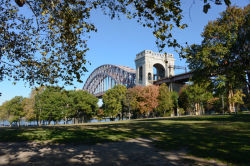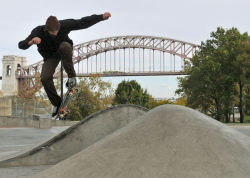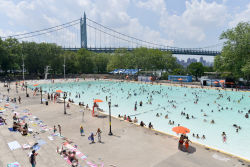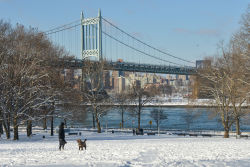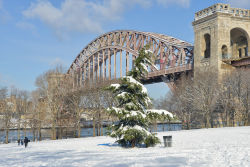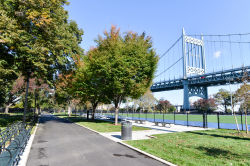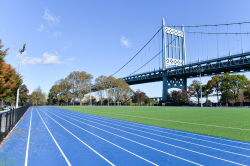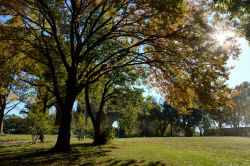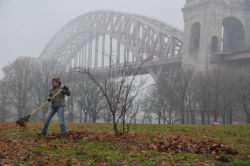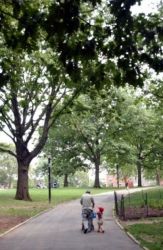Astoria Park
General Slocum Disaster
On the morning of June 15, 1904, the steamboat General Slocum caught fire in the East River with approximately 1,300 people on board, including many children. In the course of 20 minutes an estimated 1,021 people died. Prior to September 11, 2001, the burning of the General Slocum had the highest death toll of any disaster in New York City history.
The triple-decker wooden side paddler was built in 1891 and named after Henry Warner Slocum (1827-1894), a Union Army general who later represented the City of Brooklyn in Congress. Saint Mark's Evangelical Lutheran Church, which was located on Manhattan’s Lower East Side and served primarily German immigrants, chartered the ship for their 17th annual excursion to the Locust Grove Picnic Ground on Eaton’s Neck, Long Island.
Wearing their Sunday best, the passengers boarded the General Slocum at its Third Street dock, and at about 9:40 a.m. the ship headed up the East River. As the band played, people danced on the deck and passersby waved from the shore. When the ship reached Astoria, onlookers waved frantically because smoke was billowing from the portholes. Initially, the passengers assumed the burning smell came from the kitchen, and although a few crewmen were aware of the fire, they did not alert the captain. With the exception of the captain and chief engineer, the 35 man crew lacked experience and had never conducted a fire drill.
Although the crew did not sound an alarm, many passengers jumped from the boat while it passed through Hell Gate, taking their chances in New York’s most turbulent channel rather than remain onboard. Unfortunately, the majority of the ship’s lifejackets proved worthless because the material then used for buoyancy, cork, had turned to dust over time. The life preservers actually absorbed water, and the passengers who wore them were pulled underwater. Hundreds of bodies floated in the ship’s wake and washed up on Astoria’s shoreline.
Just as the General Slocum passed Randall’s Island, the smoke below deck gave way to massive flames. Only then did the captain receive word of the blaze. He had no choice but to beach the General Slocum on North Brother Island. As the ship raced to shallow water the crew tried to fight the blaze, but the fire hoses burst under the pressure. A dozen tugboats, two fireboats, a police boat, and more than a hundred other vessels joined in the rescue effort. Some of the rescue ships themselves caught fire while trying to get people off the General Slocum. In 15 minutes the General Slocum had burned to the waterline.
President Theodore Roosevelt appointed a Commission of Investigation, which determined that a number of causal factors led to the General Slocum incident. They noted specific organizational and leadership failings within the Steamboat Inspection Service, the agency of the United States government specifically created to prevent such tragedies. The Service had checked the General Slocum five weeks before the disaster. The inspectors certified the 13-year-old lifebelts as “up-to-date and of good quality.” They did not examine the fire pump and hoses, nor did they realize that all six lifeboats were stuck to the ship by a thick coat of paint.
In 1906 the city dedicated a fountain in Tompkins Square Park in remembrance of those who died in the General Slocum disaster. Every year a ceremony is held at the fountain to honor the victims. Although New York has changed immensely over the past century, ferries and ships still play an important role in the city’s daily life. Since 1946 the U.S. Coast Guard has been responsible for maritime safety, employing nearly 500 uniformed and civilian personnel in inspection duties and more than 100 as accident investigators.
Check out your park's Vital Signs
Clean & Safe
Green & Resilient
Empowered & Engaged Users
Share your feedback or learn more about how this park is part of a
Vital Park System

